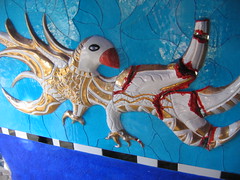A Brief History of Tarot
No one knows the history of Tarot with certainty. Facts and fiction have been oft-repeated until the two have co-mingled creating a “history” that is neither fact nor fiction.
Even the word tarot is given a multi-cultural origin. Egyptian, Hebrew, Latin, or an anagram, the origin of this word is lost. It may be a derivative of the Italian phrase carte da trijonfi (Cards of the Trumps), the word tarocchi or tarocco, or the German tarock, or the lasting French form tarot. However, these names came into vogue at least 100 years after the oldest cards were created.The best historians can do, is draw conclusions.
Among the many speculations is that The Tarot had its origins in Egypt, India, China, the Cathars, Kabbalah, or even secret societies. What we do know is that the oldest Tarot Cards seem to have originated in Northern Italy about 1420. No cards have been discovered older, or from another place of origin. Whether this is due to climate factors is uncertain.
Previous to this time, about 1375, playing cards began circulating from Muslim areas of Europe. An adaptation of the Islamic Mamluk cards, these cards had suits consisting of cups, swords, coins and polo sticks. They also contained court cards consisting of a king and two lower level males. About 50 years later, the Trump Decks (Tarot) added The Fool, The Trumps and a set of Queens. Terms such as Major Arcana and Minor Arcana are modern inventions as are the terms Pentacles and Wands.
About 1390, Jacquemin Gringonneur was commissioned to paint three decks of cards for Charles VI, King of France 1380-1422. Other than payments records for “decks of cards” nothing is recorded to show if the cards were adapted Mamuk Cards, early
